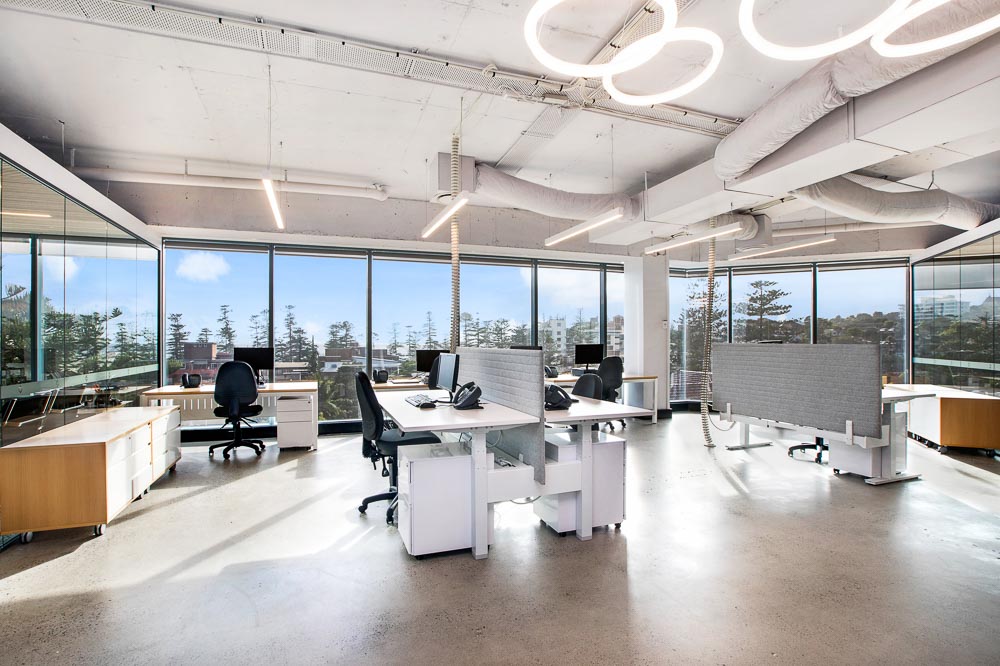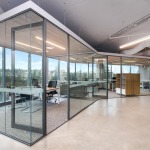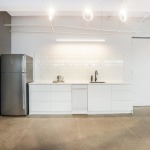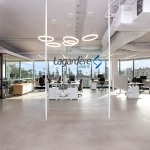Around seventy per cent of small businesses have not correctly planned or budgeted for the fit-out of their commercial office space, potentially putting their business in jeopardy.
Fit-outs often cost more and take far longer than people expect, with tenants signing leases and then facing the prospect of either being unable to use the space or working in a construction site.
When entering a commercial office space the landlord is only expected to provide the basics such as flooring, ceilings, air conditioning, lighting and common amenities which may or may not include a shower, according to the director of Pine Property, Patrick Kelleher.
However workstations, kitchenettes, partitioned offices, meeting rooms, breakout areas, data, power, telephones and furniture are all the responsibility of the tenant.
“Smaller businesses are generally shocked by how much things cost,” Mr Kelleher said.
“Around 70 per cent are unsure of the commercial fit-out costs.”
He encourages prospective tenants to engage a reputable fit-out contractor and says he prefers to recommend contractors he knows are reliable and deliver quality work.
“If a fit-out contractor provides inaccurate costs then the deal can fall over,” he said, adding that over-capitalising on fit-outs can also accentuate future cash flow issues.
However under-capitalising on a fit-out can also cost you, with good workplace design fostering a flexible yet collaborative environment, driving health, morale and productivity.
- The impressive offices of Manly-based Lagardère Sports
- Lagardère Sports
- Lagardère Sports
Fit-out Costs:
Commercial fit-outs will generally cost between $500 and $2000 per square metre for an average size office, according to Matt Moulsdale, the director of fit-out specialists, Corporate Construction Group.
Mr Moulsdale, who has worked with Pine Property, said it is hard to provide a more accurate figure without knowing the scope of work.
“If you only require workstations and breakout areas, phones, internet and power then you could budget around $500 per square metre,” he said.
“However, high-spec commercial fit-outs including new flooring, ceilings, lighting, air conditioning and a kitchenette, will cost closer to $2000 per square metre.”
“That includes walls, joinery, storage, planter boxes, breakout spaces, lounges and coffee tables.”
If your office is smaller, say 30 square metres, then expect those rates to increase due to the economies of scale.
Medical fit-outs will also cost more again – from $2000 to $5000 per square metre – depending on how much equipment and design is required, according to Mr Moulsdale.
“With medical you usually need an uninterrupted Power Supply (UPS) with battery backups, while multiple smaller suites often require basins and plumbing.”
Planning is key
Ensuring you are well prepared prior to negotiating lease terms – let alone signing formal lease documents – is critical to a smooth commercial fit-out process and entrance into your new workplace.
Just to obtain a bank guarantee – which the landlord requires to grant access to the property – will take a couple of weeks to turn around, according to Mr Moulsdale.
Once access is granted and a plan is agreed upon, a commercial fit-out is unlikely to be completed in less than six weeks, unless it’s fairly simple.
“We see it all the time where people say: ‘We have found a property, we have signed the lease and we want to move there in a month. But they have no design or Complying Development Consent (CDC).”
“Once we have a plan and a CDC, first we need to build the walls and then we site measure. Only then can we build cabinetry and workstations which takes around four to six weeks.”
During that time, Moulsdale urges tenants to arrange their own services such as telephones and internet, which may take a month or more, depending on the provider.
Engage early to improve your negotiating position
Engaging a fit out contractor prior to property inspection and lease negotiation will put tenants in a better negotiating position, helping them understand their budget and enabling them to negotiate rent-free periods for planned works, Mr Kelleher said.
Make Good Clause:
Negotiations might also cover whether the fit-out is adding value and does not need to be removed upon vacation of the property.
“The make-good clause means that the tenant is responsible for returning the property to the landlord in a similar condition as when they occupied it, unless they can show the fit-out improved the space and will assist in future lease negotiations.
Mr Kelleher said that while a fit-out for one client might not work for another, often there’s only one reasonable location for a boardroom, kitchen or bathroom so if the lessee builds them there is a chance the landlord may not require it to be removed.
“This is all part of the negotiation of the lease terms and why you need to understand fit-out costs and processes and involve a fit-out contractor early on in the process,” he said.










